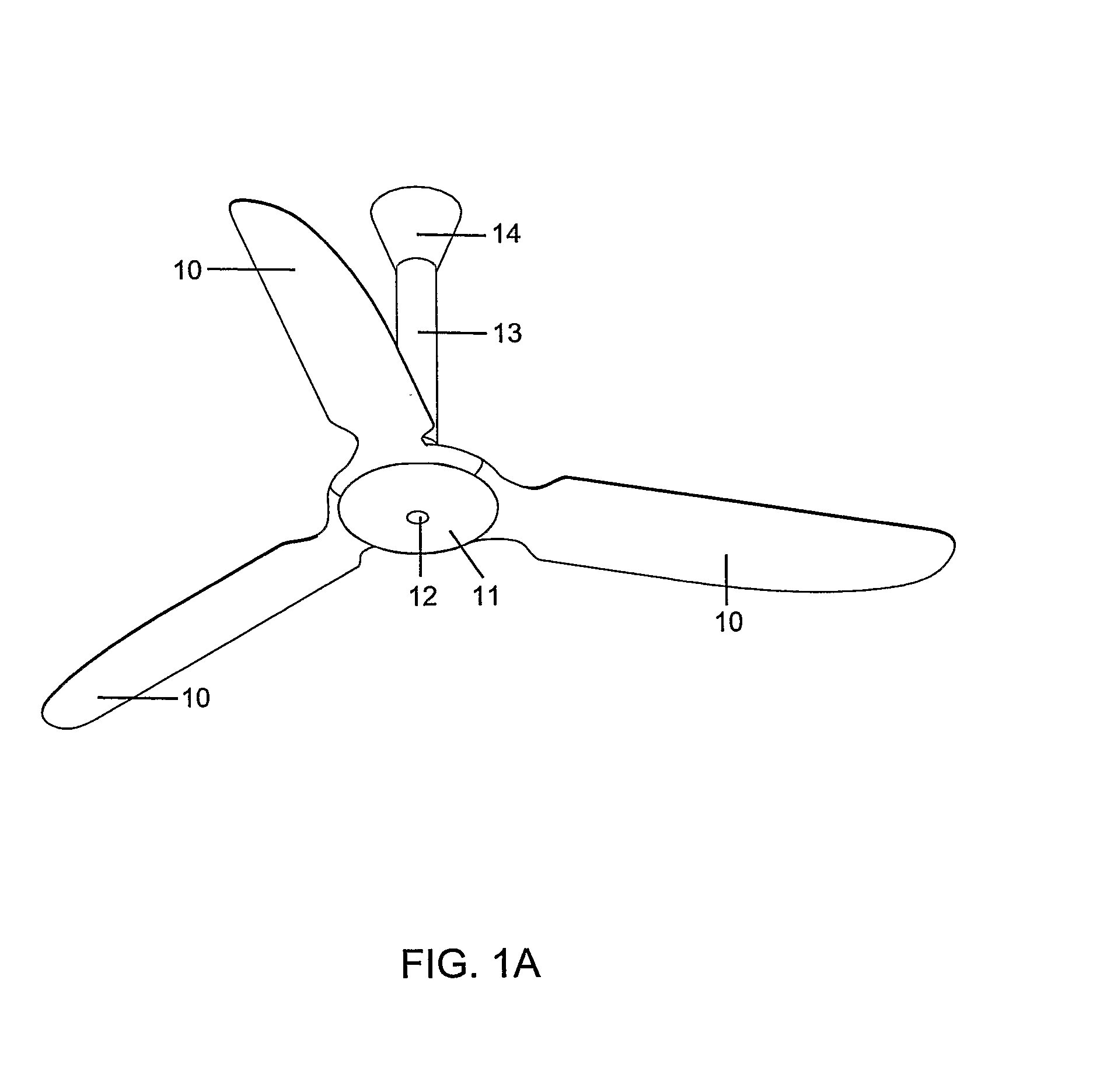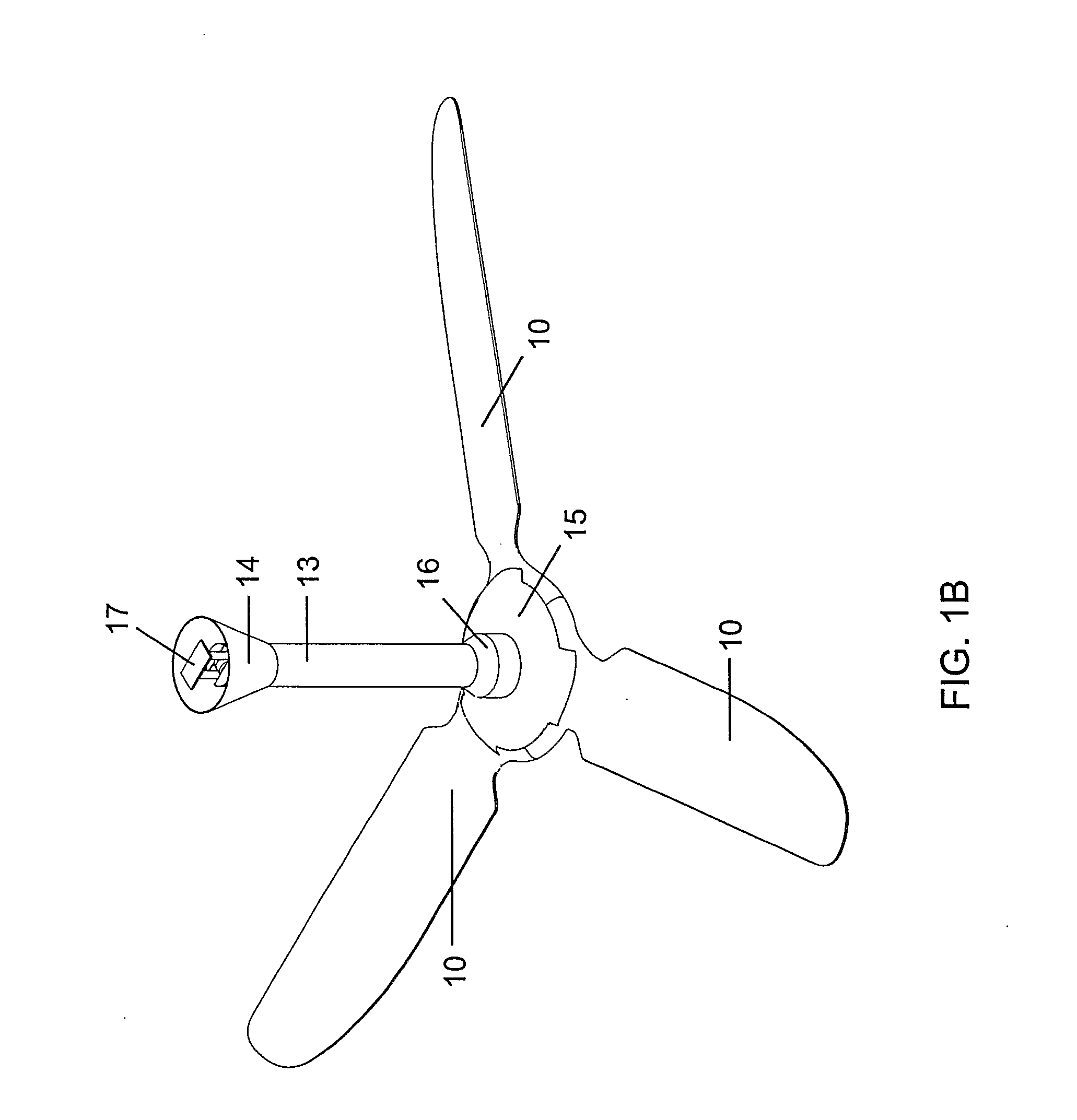Ceiling fan
a ceiling fan and fan body technology, applied in the direction of positive displacement liquid engine, piston pump, liquid fuel engine, etc., can solve the problems of high cost, long life, and ineffective electrical efficiency, and achieve low cost, easy access, and safe installation
- Summary
- Abstract
- Description
- Claims
- Application Information
AI Technical Summary
Benefits of technology
Problems solved by technology
Method used
Image
Examples
Embodiment Construction
[0034]FIGS. 1a and 1b show a TENV ceiling fan according to an exemplary embodiment. Three fan blades 10 are mounted radially around a central tube assembly 13, with a lower cover 11 with centrally located Infra-Red LED lens 12, fitting tightly to the lower edges of the blades 10, to provide reasonable ingress protection against dust and water from below.
[0035]FIG. 1b illustrates a wiring cover 14 fitted over the top of the tube 13, to conceal the ceiling U-hanger bracket 17. An upper motor cover 15 is located to fit tightly to the upper edges of the blades to provide reasonable ingress protection against dust and water from above.
[0036]FIG. 2 shows an exploded view of the internal components of the tube assembly 13. A tube cap 131 is provided having a clearance hole for a bolt 132, so that when the tube 13 is in its assembled position, bolt 132 passes through tube holes 138, tube cap 131, spacer 141, rubber bush 139 and ceiling U-hanger bracket 17, and is fastened by a nut 133 on th...
PUM
 Login to View More
Login to View More Abstract
Description
Claims
Application Information
 Login to View More
Login to View More - R&D
- Intellectual Property
- Life Sciences
- Materials
- Tech Scout
- Unparalleled Data Quality
- Higher Quality Content
- 60% Fewer Hallucinations
Browse by: Latest US Patents, China's latest patents, Technical Efficacy Thesaurus, Application Domain, Technology Topic, Popular Technical Reports.
© 2025 PatSnap. All rights reserved.Legal|Privacy policy|Modern Slavery Act Transparency Statement|Sitemap|About US| Contact US: help@patsnap.com



